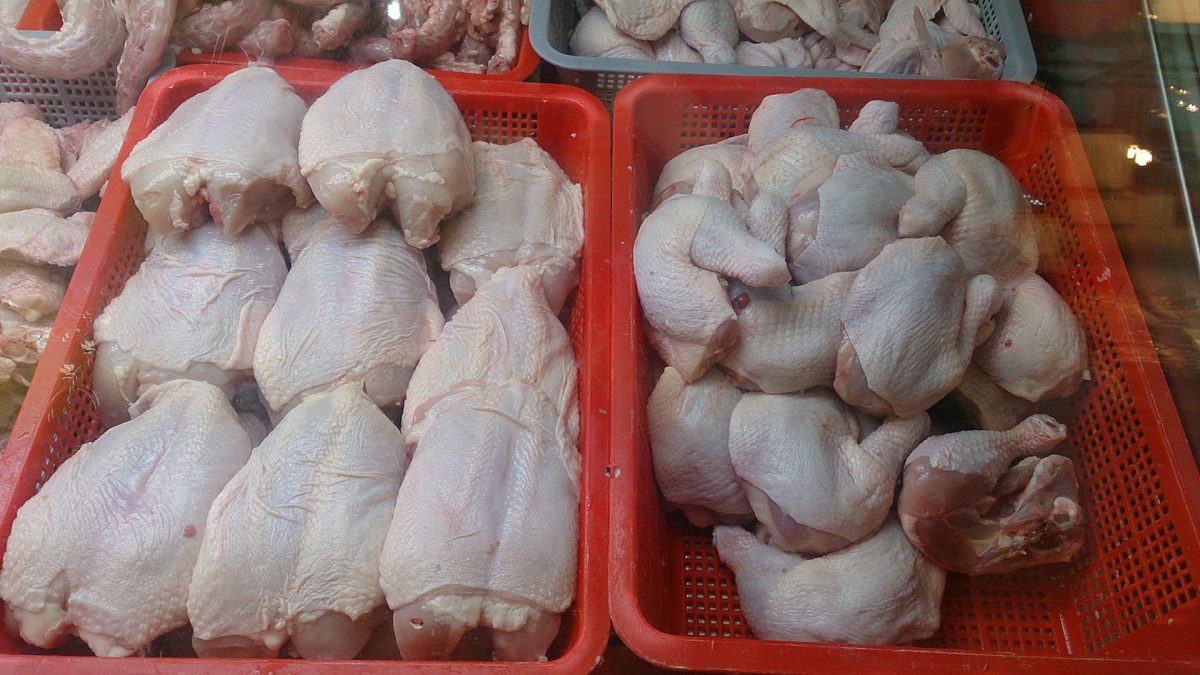Phthalates are hormone-disrupting plastics chemicals linked to a number of adverse health effects, such as disturbing infant and child development, and, in adults, may affect reproductive health in men and endometriosis in women, and is associated with increased abdominal fat in both. “Given the increasing scientific evidence base linking phthalate exposure with harmful health outcomes, it is important to understand major sources of exposure,” which I discuss in my video What Diet Best Lowers Phthalate Exposure?.
What is the most major exposure source? Diet. If you have people stop eating for a few days, you get a significant drop in the amount of phthalates spilling out in their urine. One can only fast for so long, though. Thankfully, we can see similar drops just from eating a plant-based diet for a few days, which gives us a clue as to where most phthalates are found.
The highest levels are found in meats, fats, and dairy. Poultry consistently comes out as being the most contaminated across the board with some of the highest levels ever reported, though there are geographic exceptions. In the United Kingdom, for example, fish came out worse than poultry, and, in Belgium, nothing appears to beat out reindeer meat in terms of contamination. In the United States, though, it is poultry, and the finding that egg consumption is also significantly associated with phthalate levels “suggests that chickens themselves may be contaminated” and not just arise from the plastic they’re wrapped in at the store.
The same might not be true with dairy, however. Realizing that these chemicals may be harmful, researchers in Seattle took ten families and randomized them into a five-day complete dietary replacement with fresh organic foods without any packaging. Nothing touched plastic. Organic milk was delivered in glass, and even the crates used to carry the food were wooden instead of plastic. This was like a fasting study to see what role eliminating processed foods would have on lowering phthalate levels because not everyone wants to switch to a plant-based diet—or stop eating completely. In my video, I show a chart depicting where the families started at baseline before changing their diet and where they were a week after the experiment, once again back on their baseline diet. What happened in the middle? When eating fresh and organic food, their phthalate levels went up, “a dramatic and unexpected increase” in one of the most toxic phthalates—and not just by a little: It was like a 2000 percent increase. So the researchers tested all the foods. One of the spices was off the chart, and so was the dairy. Most of the phthalates apparently don’t come from the cow, however; they come from the tubing. If you milk cows by hand (which even the Amish don’t do anymore) the levels of phthalates in the milk are low, but if the same cows are milked by machine, the milk picks up phthalates from the tubing. As such, the final levels may depend more on the tubing than on what the cows are fed.
We’re not sure where the chickens are getting contaminated with phthalates, though. While that study was done on adults, we learned more recently where our kids may be getting it. Researchers found pretty much the same thing: mostly meat, including poultry and fish. Again, poultry appeared to be the worst, while soy consumption was associated with significantly lower levels. But what kind of exposure are we talking about? Researchers calculated what may be typical exposures for infants, teens, and women. How do these data compare with current guidelines? The U.S. Environmental Protection Agency’s reference dose, which is like the maximum acceptable threshold, is 20 µg/kg-day, based on liver risk. Europe places their maximum daily intake for testicular toxicity at 50 µg/kg-day. So a typical infant diet exceeds the EPA’s safety level, “while a diet high in meat and dairy was over this threshold by approximately four times. For adolescents, a diet high in meat and dairy also exceeded the EPA’s reference dose.” Indeed, diets high in meat and dairy consumption resulted in a two-fold increase in exposure. And “[a]ll diets for all groups exceeded the allowable daily intakes (ADI) derived by the US Consumer Product Safety Commission” for problems with sperm production, while diets high in meat and dairy consumption may exceed the allowable intake for risk of reproductive birth defects as well.
For more information on dietary sources of phthalates, I encourage you to watch both Chicken Consumption and the Feminization of Male Genitalia and Lowering Dietary Antibiotic Intake. Diet isn’t the only way one can be exposed internally, though. See my video Avoiding Adult Exposure to Phthalates, which discusses the risk in both children’s and adult toys.
In health,
Michael Greger, M.D.
PS: If you haven’t yet, you can subscribe to my free videos here and watch my live, year-in-review presentations:
- 2012: Uprooting the Leading Causes of Death
- 2013: More Than an Apple a Day
- 2014: From Table to Able: Combating Disabling Diseases with Food
- 2015: Food as Medicine: Preventing and Treating the Most Dreaded Diseases with Diet
- 2016: How Not To Die: The Role of Diet in Preventing, Arresting, and Reversing Our Top 15 Killers
